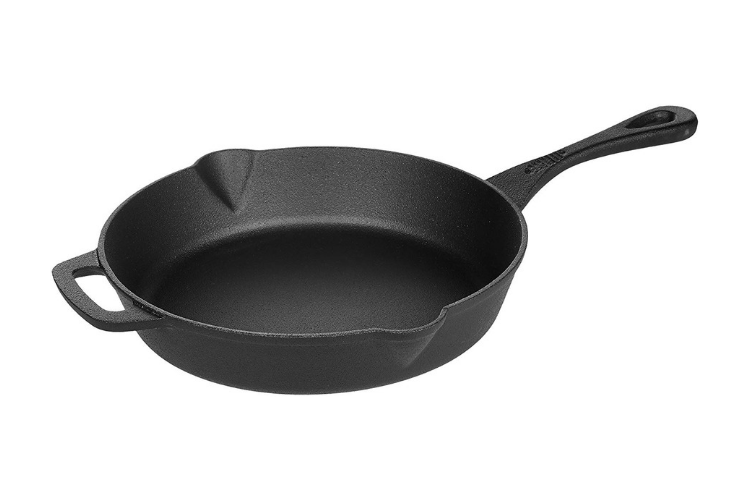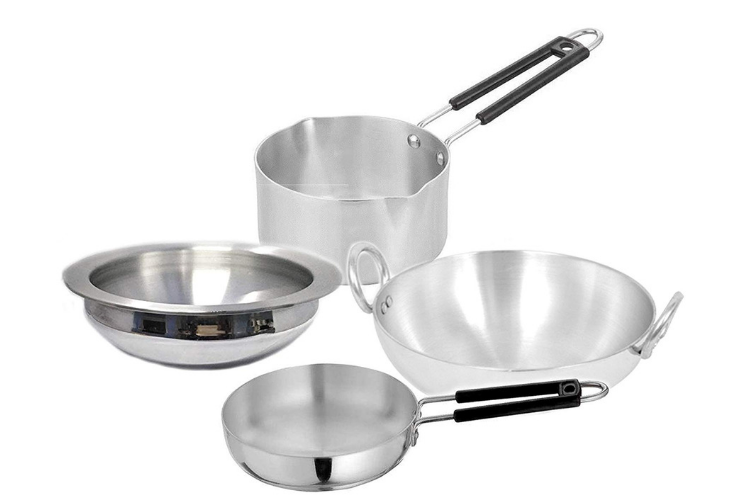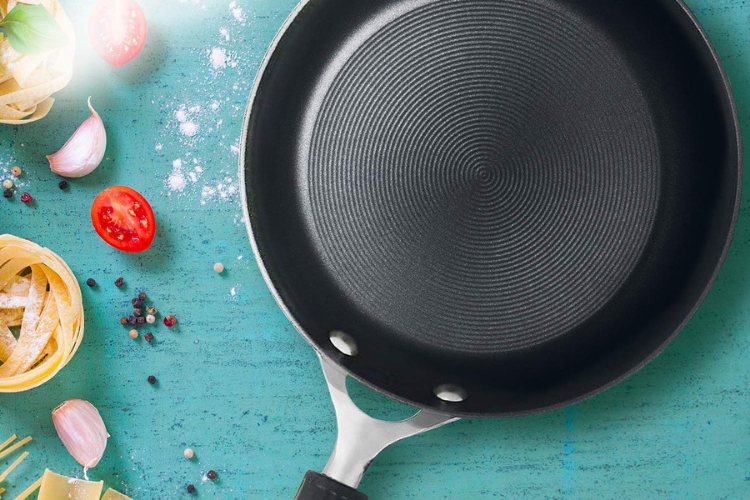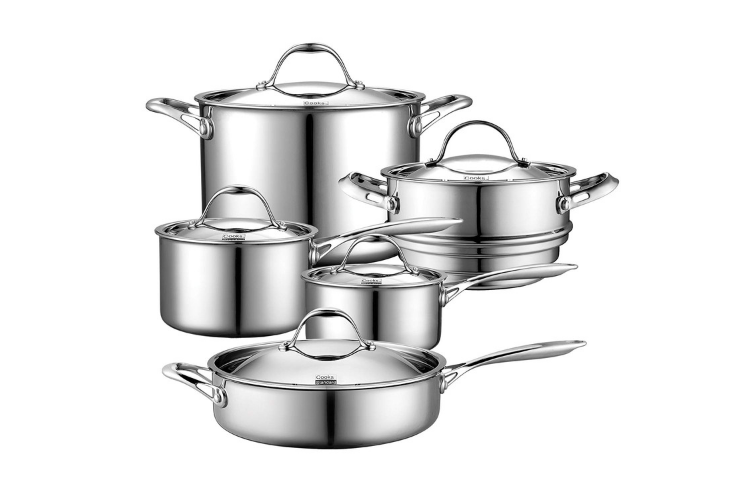Cooking is an integral part of life. Whether you are just a single person who lives on noodles and omeletes, or a home maker who prepares elaborate meals for the family, a set of good quality cookware is essential. Today, cookware is available in plenty of designs, materials and options that it can sometimes be difficult to make the right choice for our needs. In this post, we examine the factors you need to consider when buying cookware. Remember to buy the best quality cookware you can afford since it will work well and last longer.
What should you look for when buying cookware?
Here are some of the factors you need to consider when buying cookware.
Heat conductivity
Some metals are better conductors of heat when compared to others. Better heat conductivity will result in food cooking more evenly. Copper, for example, is a very good conductor whereas stainless steel is not. When you turn up the heat or turn it down, copper cookware will react quicker to the temperature change than stainless steel cookware.
Price
Naturally, the price of the pots and pans is a key factor involved in your buying decision. As a rule of thumb, buy the best you can afford.
Durability
Looks matter. You don’t want your cookware to wear out quickly. You want them to maintain their good looks and last long. Stainless steel is a great in this respect.
Reactivity
Some metals react with certain foods. Aluminum reacts with acidic and alkaline foods cooked in it. By reacting, I mean that some of the aluminum actually gets absorbed into the food. So when you plan to buy cookware, ensure that you are aware of the reactivity and toxicity of each metal before you buy.
Maintenance
Lastly, maintenance also needs to be factored into your buying decision. If you prefer not to spend too much time in keeping your cookware shiny and nice, then you must buy cookware that requires less maintenance. Copper and cast iron cookware need a bit of work to keep it looking good while stainless steel is a lot easier to look after. If you just prefer to toss them into the dishwasher, stainless steel it is.
Now that you have a general idea of what you neeed to keep in mind when buying good cookware, here are some of the pros and cons of buying cookware based on material.
Stainless Steel Cookware

Stainless Steel Cookware is great because it is easy to clean, is non-reactive, does not stain and is rust-resistant. The downside – it is a poor conductor of heat leading to uneven cooking. Overheating this metal can lead to discoloration. When stainless steel is paired with other metals, like copper or aluminum, you can get improved conductivity and better heat distribution.
If you are buying soup pots, pressure cookers, and sauté pans, this is one of the best materials to consider buying.
Advantages
- Easy to clean
- Non reactive
- Does not get stained
- Is non corrosive
- Compatible with induction stoves
- Dishwasher friendly
DISADVANTAGES
- Poor conductor of heat
Cast Iron Cookware

Cast-iron cookware is usually thick, heavy and highly durable. It is one of the best materials that conducts heat evenly and retains the temperature for long. Whether you want to cook food slowly or want to sear meat and vegetables, cast iron pots and pans are a great choice.
Cast iron pans can come with enamel coating or they can be bare. Bare cast iron pots need to be seasoned well before putting it to use. You also need to avoid using soap and other cleaners, which may remove the seasoning. Another thing you must keep in ind when using cast iron pots is that you don’t leave any food in the pan for long, as it is prone to rusting. In other words, you need to take great care to maintain cast-iron cookware.
Some cast iron cookware comes with a hard, enameled coating. There are a couple of advantages in buying such cookware. One – they do not require seasoning. And two – they will not react to foods high in acidity. The downside to enamel is that it is fragile. It can chip or crack when overheated or mishandled.
ADVANTAGES
- Non-reactive when enameled
- Long lasting
- Heats slowly and evenly
- Retains heat for long
DISADVANTAGES
- Needs to be seasoned
- Prone to rusting
- Reacts to acidic food
Aluminum Cookware

Pots and pans made of aluminum are great to use when you don’t have need for uniform cooking, like when boiling pasta. They are lightweight in nature and require very little maintenance. But, because aluminum is a soft metal, it tends to get warped or dented easily. It is also not advisable to cook food that are acidic/alkaline in nature because it will cause the aluminum to react. You must always ensure that you remove the food promptly after cooking to avoid metal absorption. Aluminum cookware is not dishwasher safe and must be hand washed.
DISADVANTAGES
- Can becomes warped
- Prone to uneven heating
- Reacts to acidic/alkaline/sulfur-rich foods
- Not dishwasher friendly
Cast Aluminum Cookware
Cast aluminum is created by pouring molten aluminum into a mold to create a thicker, stronger product. It retains heat better but is still capable of leaching into acidic and sulfuric foods. Therefore you need to remove foods cooked in them immediately after cooking.
ADVANTAGES
- Thick build
- Retains heat well
DISADVANTAGES
- Reacts to acidic/sulphuric foods
- Not dishwasher friendly
- Not compatible with induction stoves
Anodized Aluminum Cookware

Anodized aluminum cookware is also another variation of the original. Here, the metal is subjected to an electrochemical process called anodization, which creates a thick, hard, smooth, non-reactive surface. Anodized aluminum varies from hard-anodized aluminum in that it is much stronger. It is twice as strong as stainless steel, is durable, and is non-reactive and resistant to corrosion and abrasion. This material is especially great for skillets, sauté pans, stock pots, and roasting pans.
DISADVANTAGES
- Not dishwasher friendly
- Not compatible with induction stoves
Copper Cookware

Copper is a great even conductor of heat so cookware made in copper gives most control while cooking. However, when cooking in copper pans, high heat must be avoided.
Copper cookware is both expensive and requires a lot of care with cleaning. If it is not cleaned as per specific requirements, it will lose its lustre and result in its oxidation, which will result in uneven heating.
ADVANTAGES
- High conductor of heat
- Long lasting
- Good temperature control
DISADVANTAGES
- Reacts to certain foods
- High maintenance
- Not suitable to cook in high temperatures
- Not dishwasher safe
- Not compatible with induction stoves
Nonstick Cookware

Non-stick cookware is one of the most popular cookware because it is less expensive and prevents food from sticking, which makes it easier to clean. It is also a great option for those looking to cook with less fat and oil. But it has a short shelf life, because the nonstick coating is not designed to last long.
Over time, the nonstick surface will weaken and lose the ability to work as required. Using metal spoons and ladles to cook the food can also damage the coating and render it unusable.
Non-stick coating can be Teflon or ceramic. Since Teflon coating has been shown to be toxic, ceramic has emerged as a non-toxic solution. However, there are other downsides to using ceramic coated cookware. It heats food slowly and unevenly and is not dishwasher friendly (when used for long cycles). It is also best used when cooking in low temperatures.
Advantages
- Inexpensive
- Easy to clean
- Great option for low-fat cooking
- Compatible with induction stoves
DISADVANTAGES
- Short shelf life
- Not dishwasher friendly
Multi-ply cookware

If you are not satisfied with any single type of material, you can consider using multi-ply cookware. This type of cookware combines several metals into one pan or pot to take advantage of the best qualities of each metal. For instance, it may combine the goodness of good conductivity and even heating with the convenience of non-stick interiors. Some of them may be 3-ply, sometimes, 4-ply and there are even 5-ply construction. There are different metal combinations available, and its versatility makes it a good buy for those looking for quality cookware for everyday use.
DISADVANTAGES
- Not dishwasher safe
Final Thoughts
Now that you’ve got a fair idea of the different cookware options available in the market, you can hopefully make a more informed decision when you are out cookware shopping!
What is your favorite cookware? Let us know in the comments below!
Note: Just so you know, when you buy through our links on this page, HomeBuzz may collect a share of sales or other compensation.
Leave a Reply